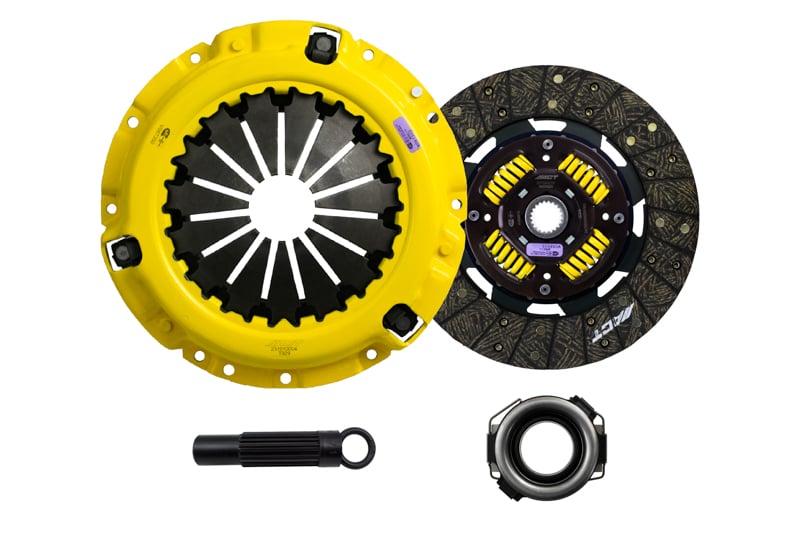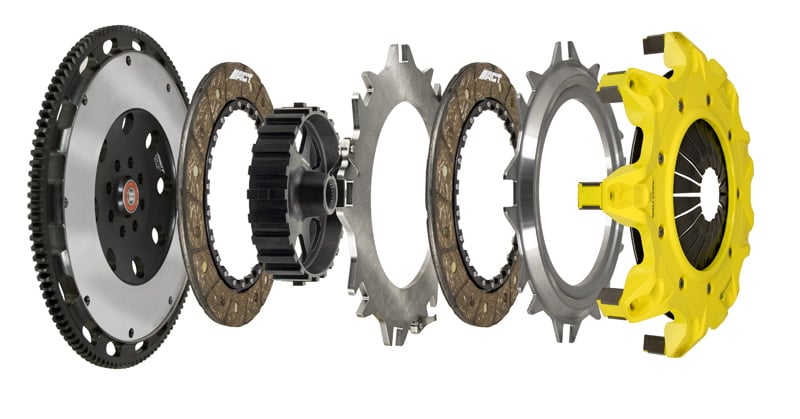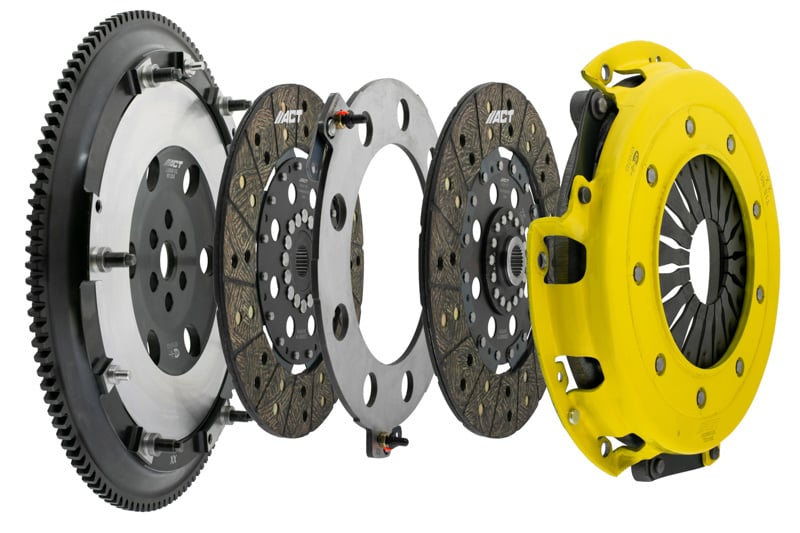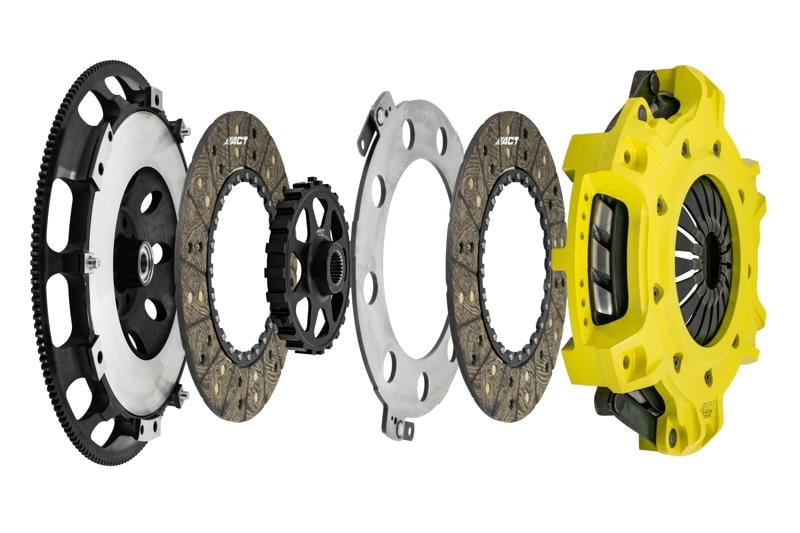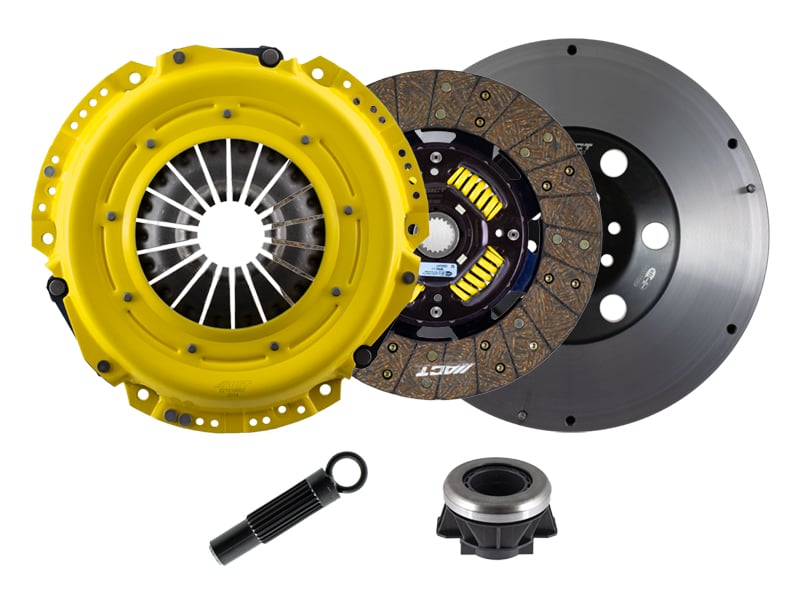Monthly Archives: August 2020
-
August 06, 2020
Recently, our technical department received some questions about dual-friction clutch discs. Here’s why ACT chooses to go with the same friction materials on each side of our clutch discs.
Two of the most important concepts in performance clutch functionality are flatness and parallelism. When using anything other than identical friction materials on each side of a clutch disc, the differences in thermal conductivity and coefficient of friction create an unavoidable variance in temperature between the two disc surfaces as the clutch heats up. This temperature difference, combined with the unmatched thermal expansion properties, creates a condition where the disc is vulnerable to deforming out of flat and, in some cases, out of parallel as well.
Out of flat and out of parallel discs contribute to poor shifting (more pedal travel required), clutch drag and judder. You want a flat cracker but you might end up with a wavy potato chip.
Have clutch-related questions you...
-
August 06, 2020
Gear Rattle
Increased gear rattle noise may occur when changing to an aftermarket performance clutch and/or flywheel, including ACT’s products. The most common gear rattle noise occurs when a vehicle is idling in neutral after a long drive or on a hot day. It sounds like a light knocking or growling sound. Gear rattle is an audible noise transmitted from the impacts between the transmission gear teeth. A vehicle engine’s torsional vibrations (momentary angular acceleration) pass through a transmission causing the separation and resulting impact of the gear teeth. Gear rattle is not to be confused with clutch chatter or out-of-balance vibrations; both of which are conditions mostly felt and generally, not heard. In general, gear rattle is not harmful to the transmission, but can be an annoyance to the driver. It can become a serious concern if misdiagnosed as a transmission or engine problem. Traditionally, automakers have dampened torsional vibrations by using a clutch disc with...
-
August 06, 2020
Check Engine Light When Using a Lightened Flywheel on the Subaru WRX
When using a lightened flywheel with the Subaru WRX, the check engine light (CEL) has been known to come on for no reason on some vehicles. Because the high inertia of the factory flywheel is not there to smooth out the idle, it can be slightly rougher than stock with a lightweight, aftermarket flywheel. The CEL is the ECU interpreting the change in idle as a misfire in the electrical system. There is no misfire in the electrical system, but this is the only way the ECU has to interpret the change in idle with its programming. The only way to avoid getting the CEL is to use a heavier flywheel, such as the stock flywheel. This has been observed occasionally with flywheels as heavy as 12.5 pounds, but more commonly with lighter flywheels, like the ACT Prolite at 9.6 pounds or aluminum flywheels...

